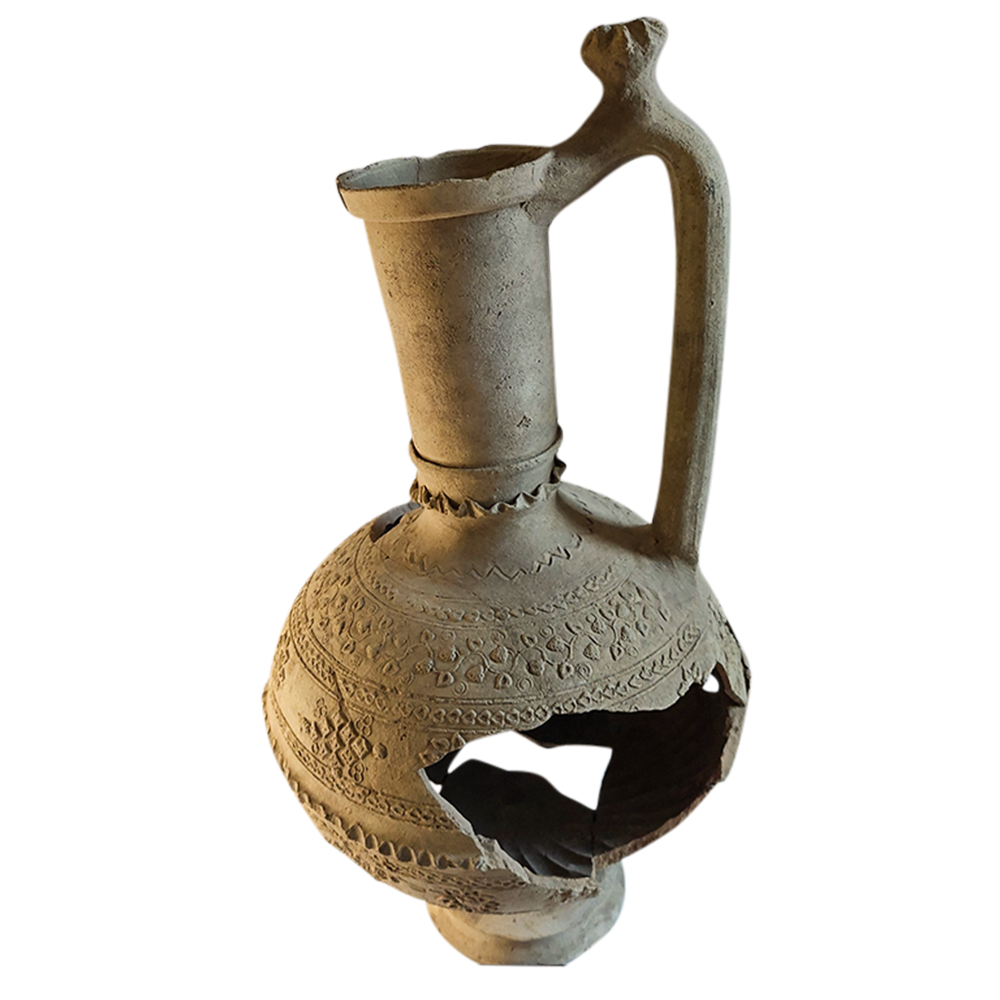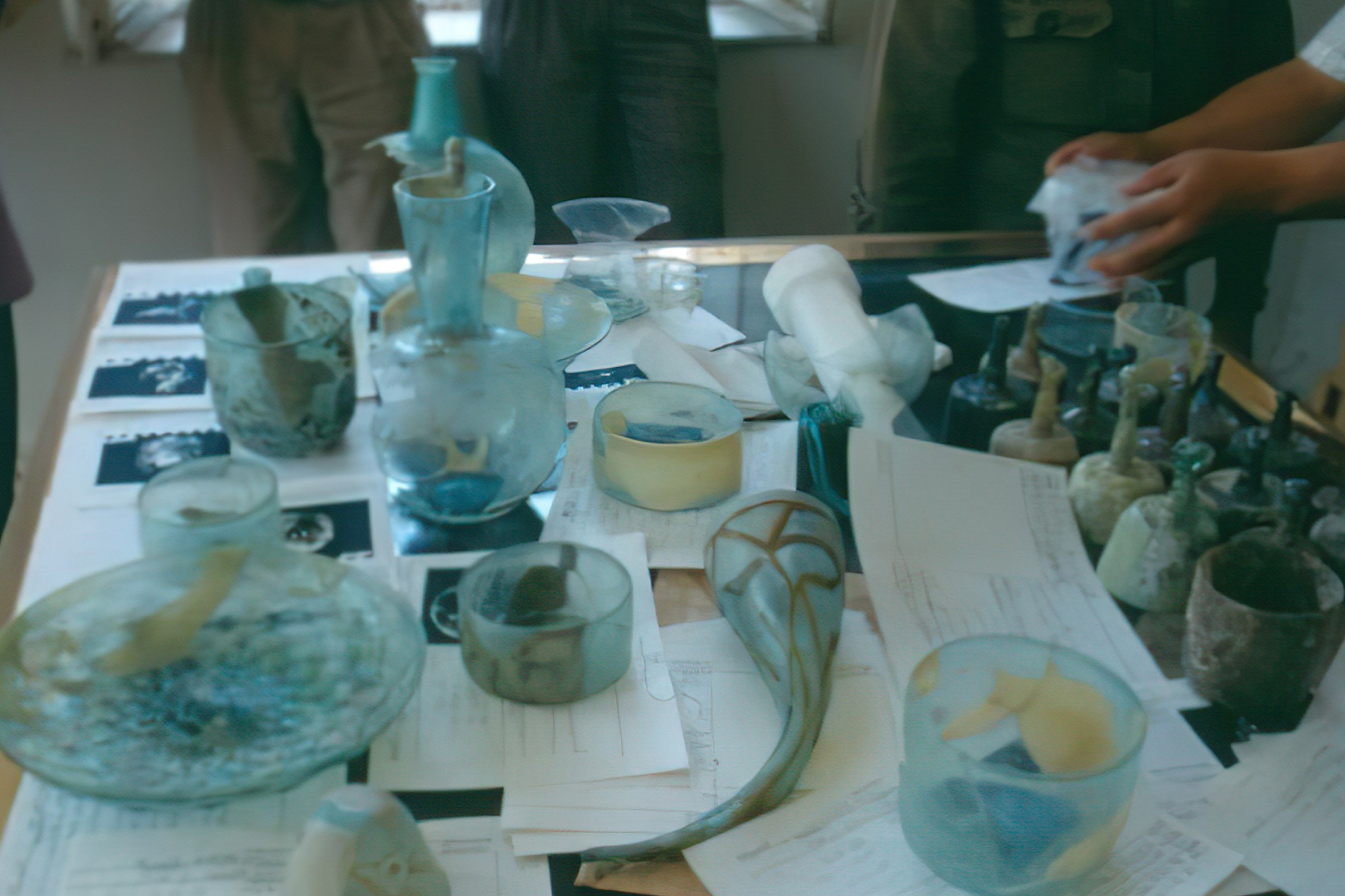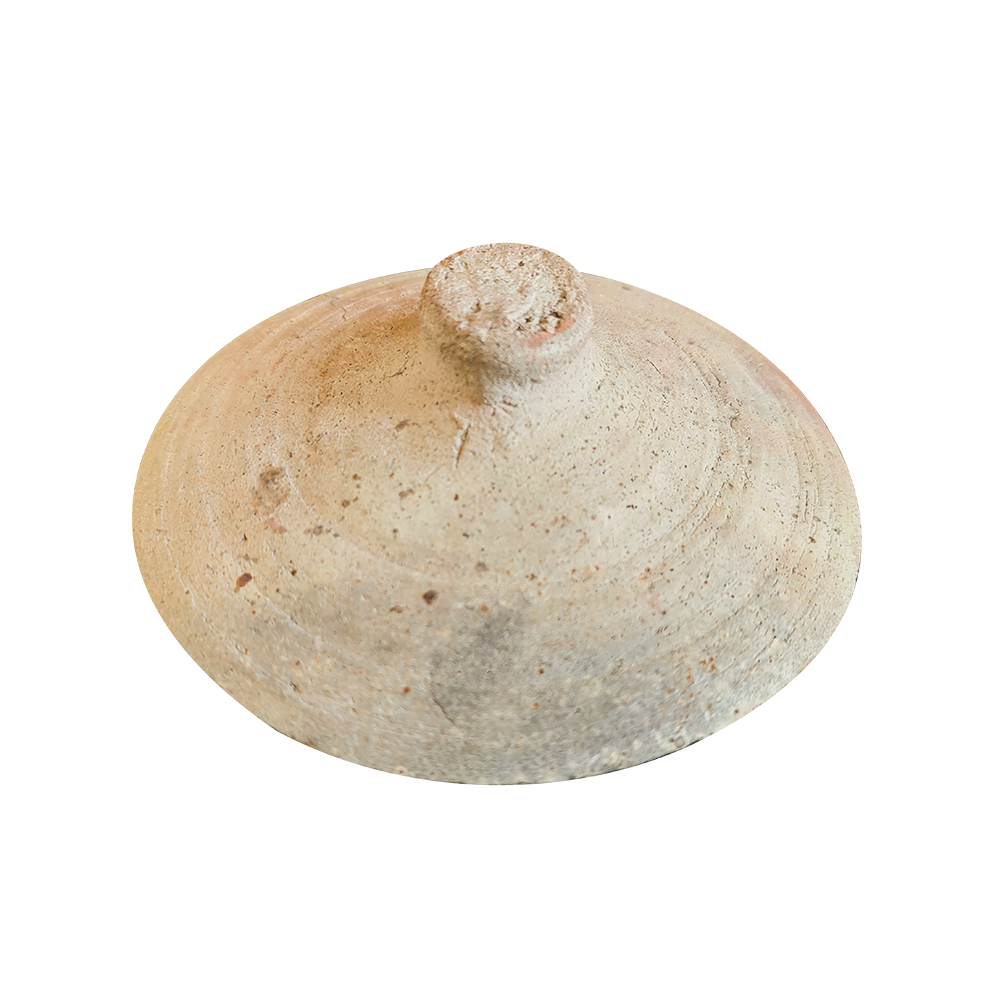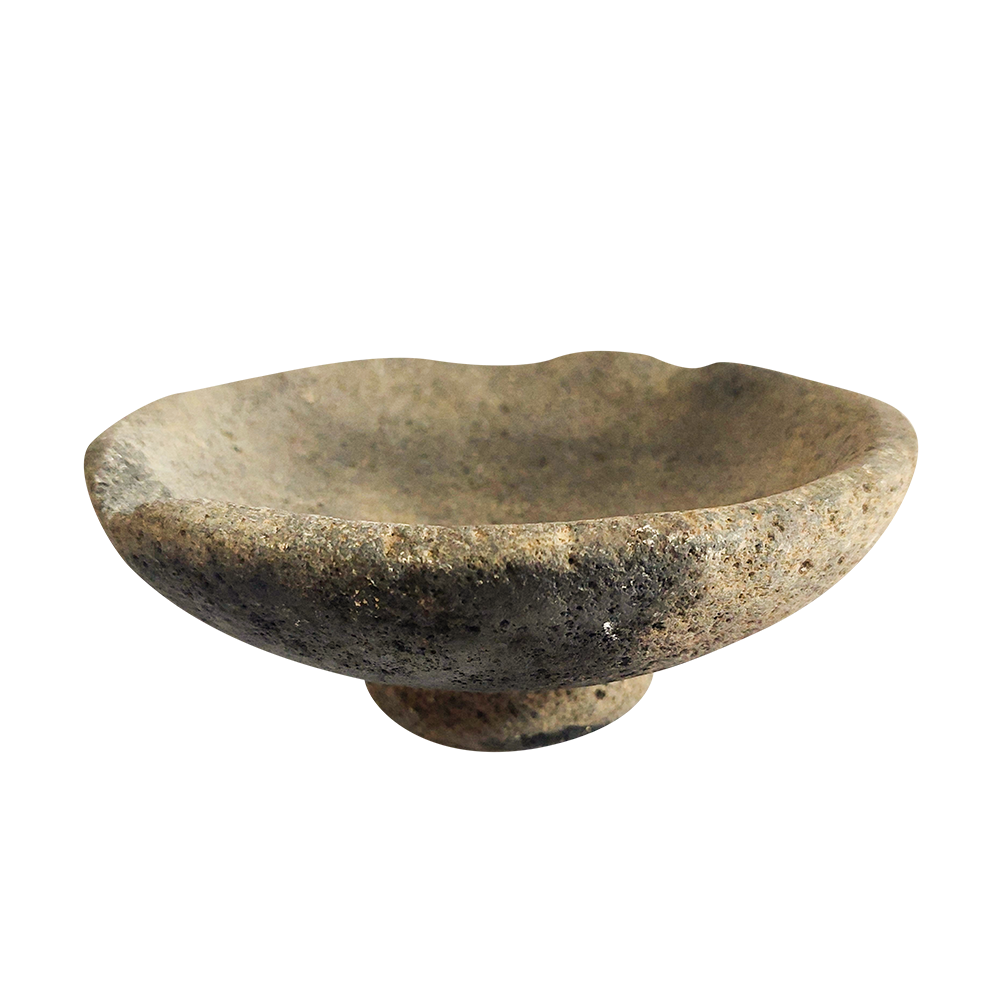


Everyday life: Household objects
About the exhibition
This kitchen inventory gives you a small overview of cooking pots, storage vessels and what people in earlier times thought to be useful and perhaps beautiful for their houses. The distinction from modern equipment minimal and lies mainly in the materials used. Nowadays our cooking pots are made of aluminium, stainless steel or copper, and sieves are from plastic or stainless steel. However, even today, many people around the world are convinced that some dishes will only taste good when prepared in a clay pot!
Although we now use electric blenders instead of grinding stones, we still utilize mortars and pestles made of basalt, granite, or marble, employing the same methods as those used 7,000 years ago (Nos. 531, 472, 575). To keep tools and knives sharp, whetstones were used, just as they are today. (No. 453).
The selection of vessels does not adhere to chronological aspects but is based solely on their functionality. We have open forms, like bowls, and closed shapes like bottles, vases and jugs. Footless containers with very rounded bases required support. If placing them in the sand was not possible, they could be hung on strings (No. 238) or put on stands (No. 165).
The dates of the objects here range from 3rd millennium BC to Abbasid 9th century AD. Except for the drinking glass and the grinding stones, the material of the vessels is baked clay.
A marked difference can be observed between the rather plain objects intended for eveyday use and the more sophisticated jugs and wineglasses that adorned the Abbasid court. The large pottery jug (No. 776) is put together from moulded hemispheres to which a long neck, a handle and a foot are added. The wine glasses (No. 690) are made of turquoise glass which was very popular in Abbasid Raqqa as seen here:














